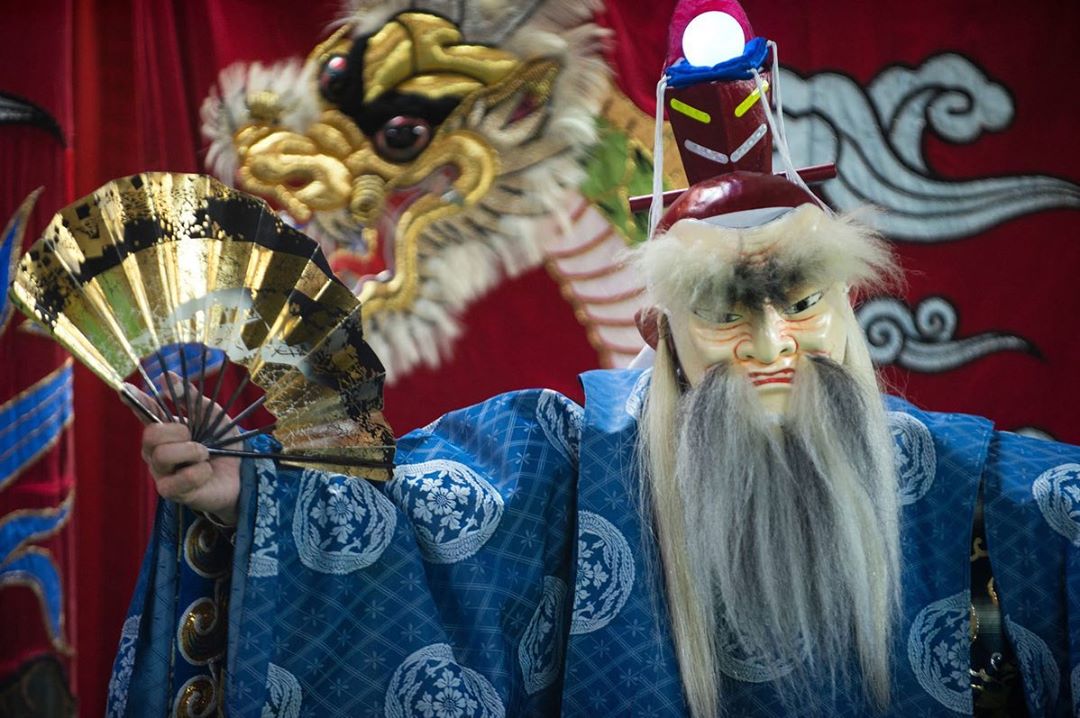
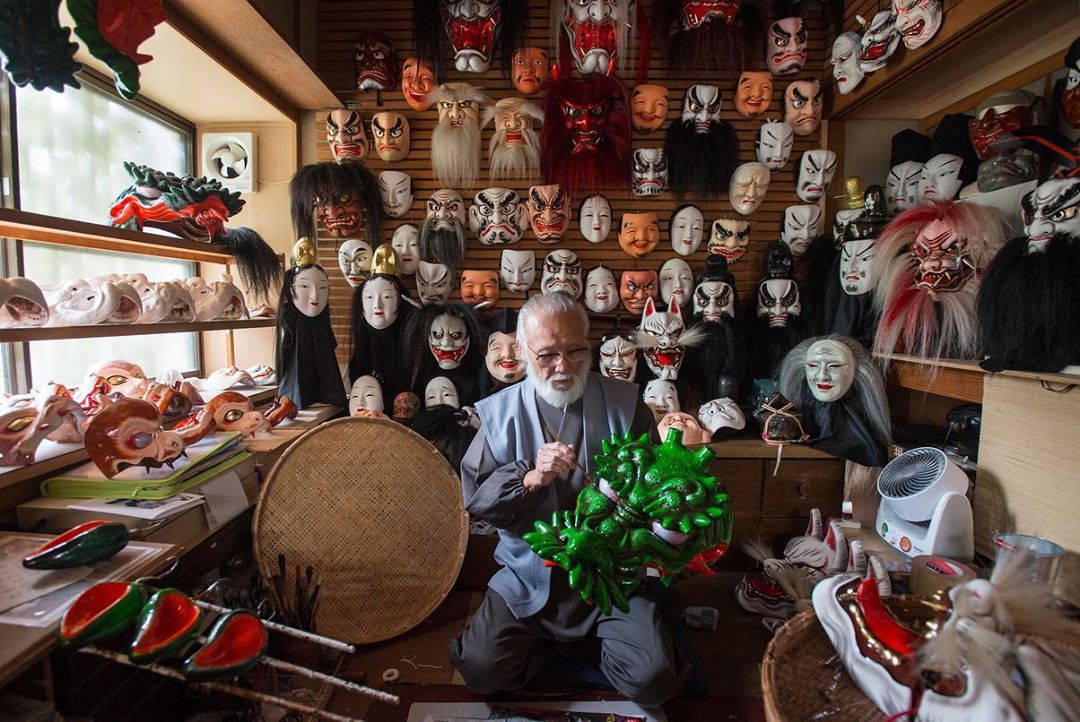
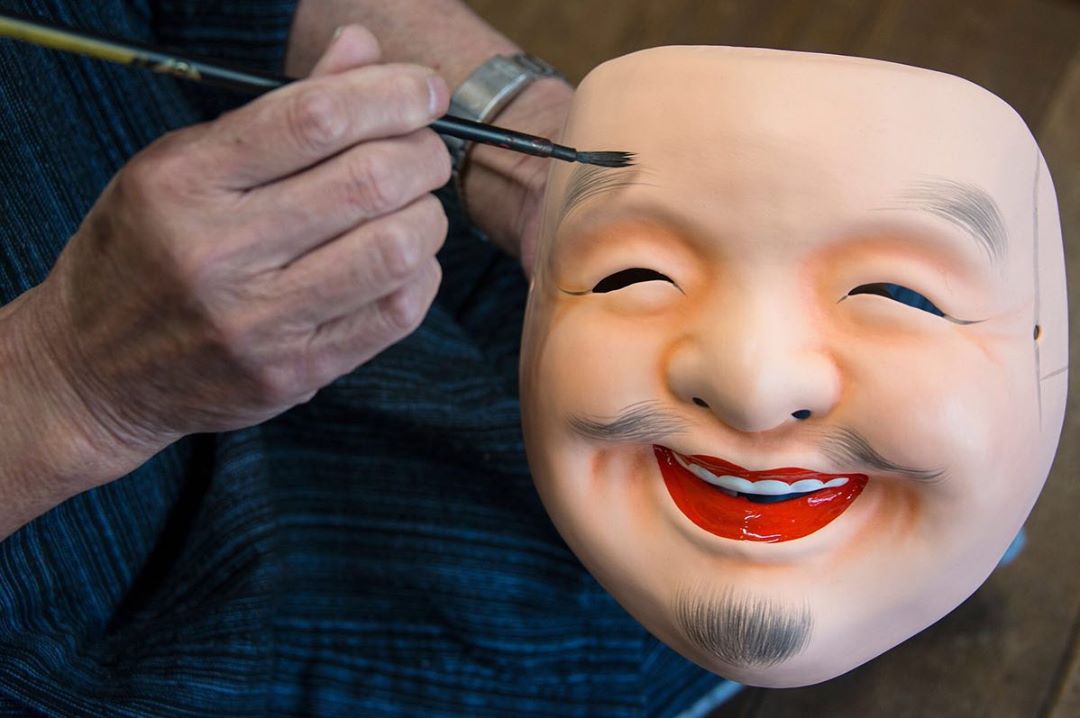
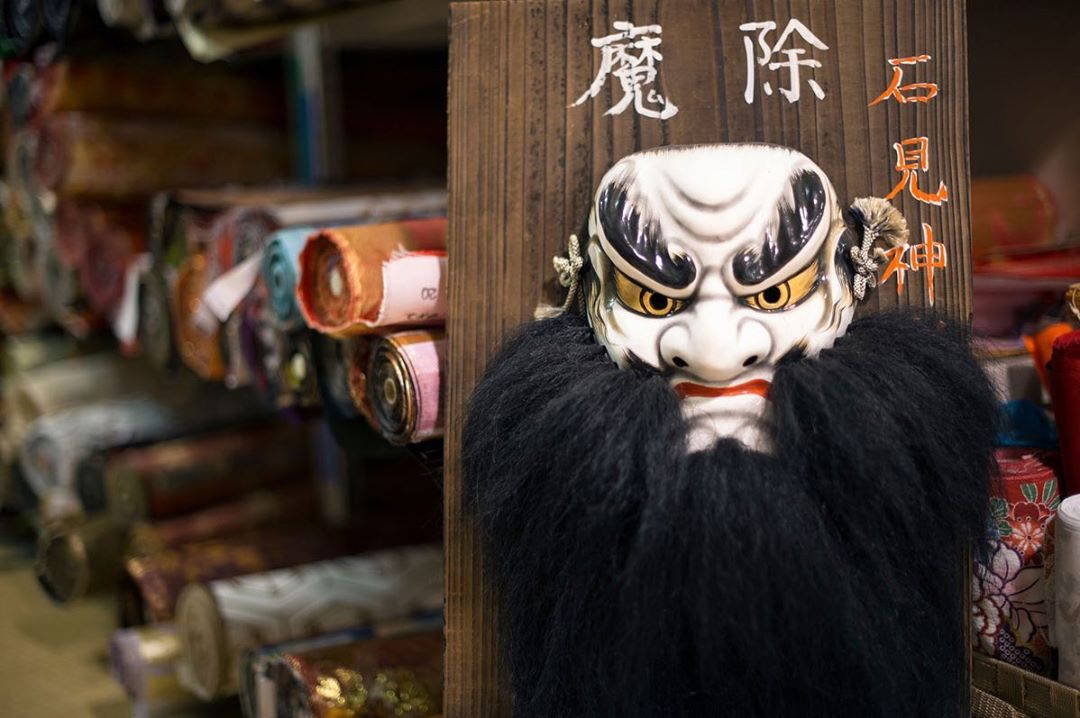
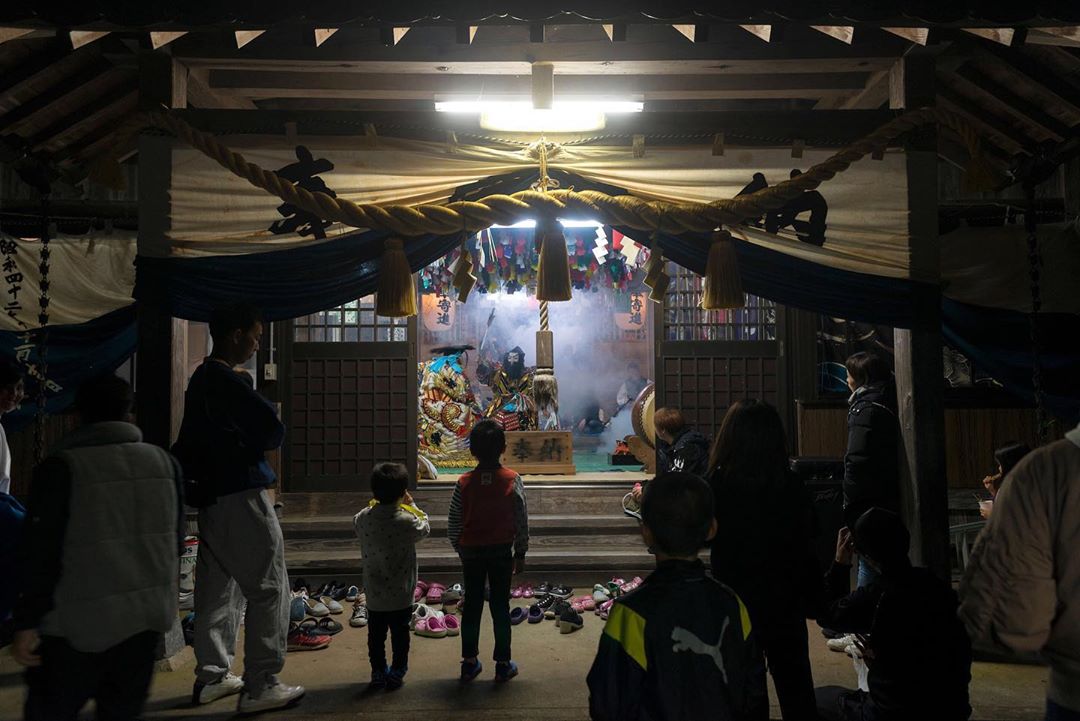
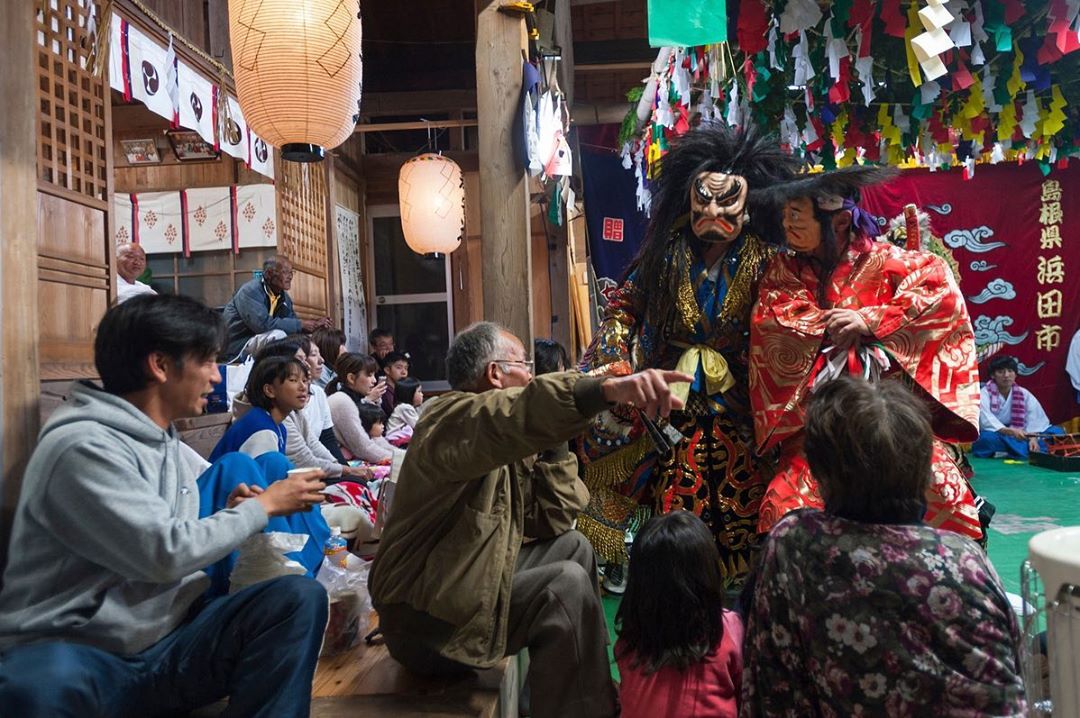
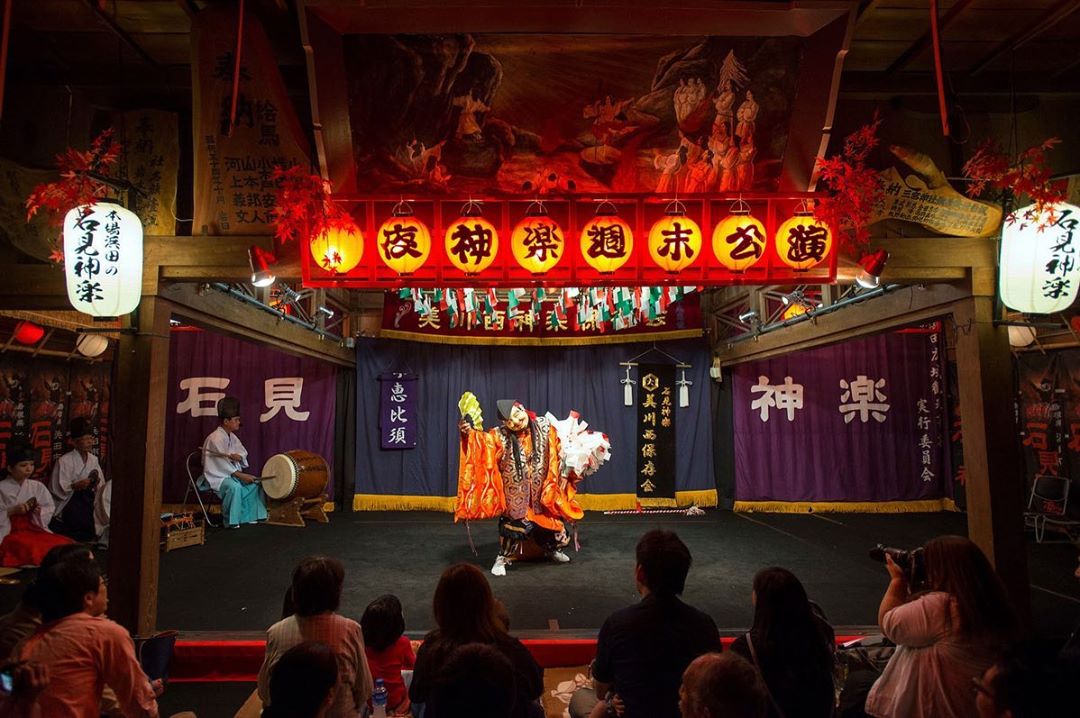
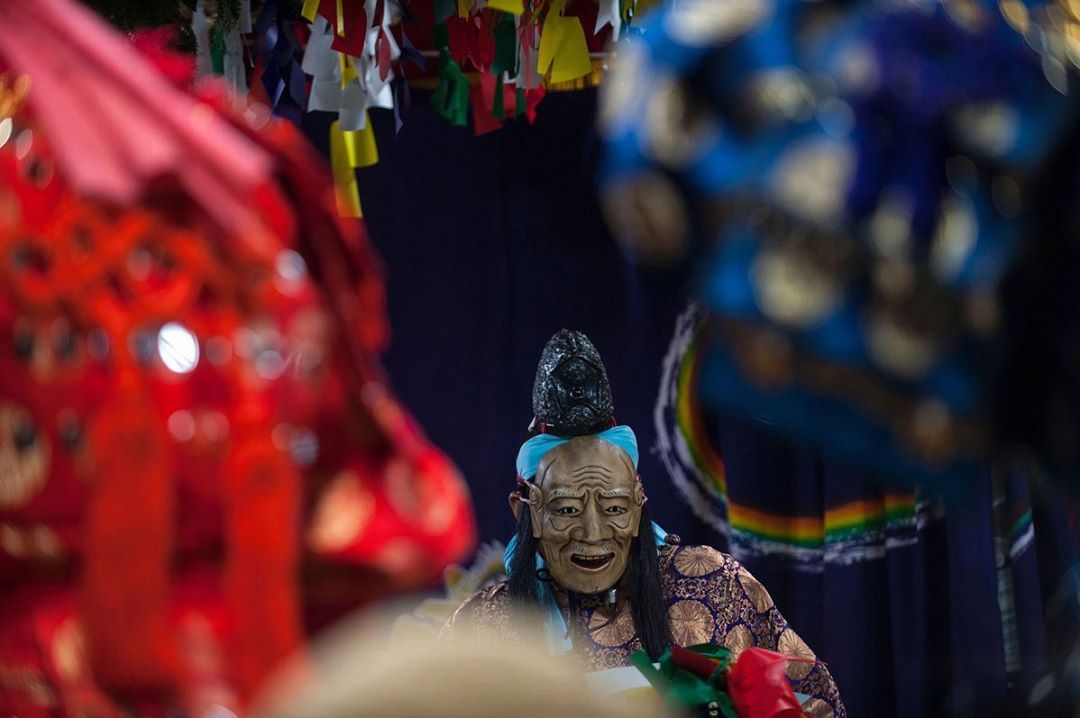
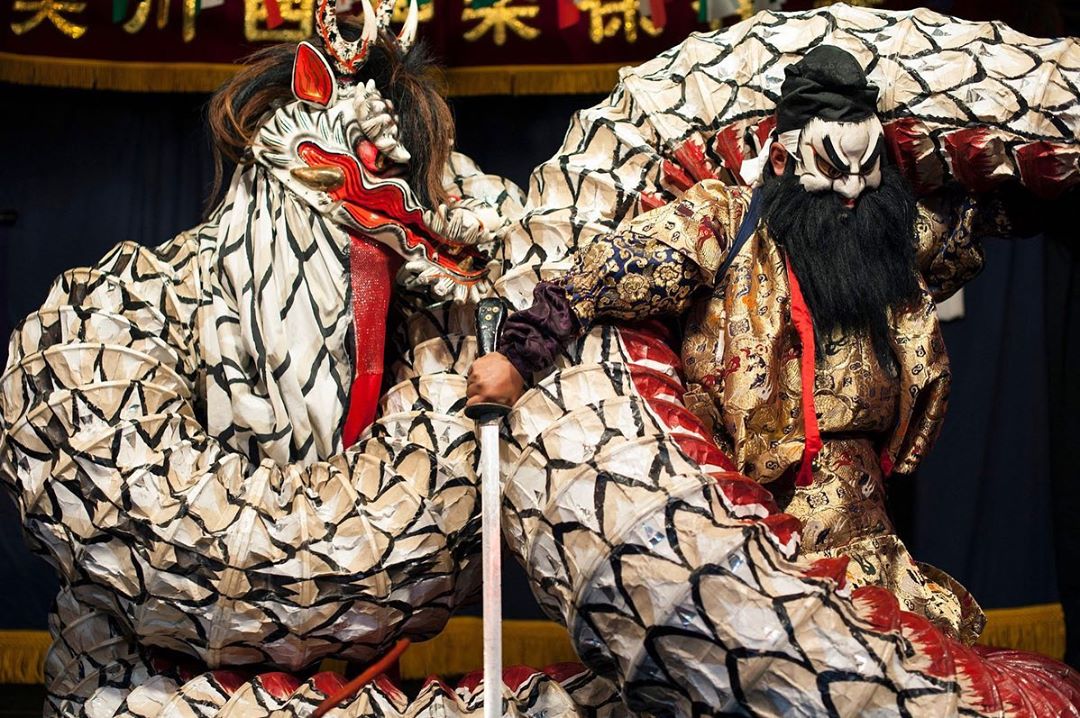
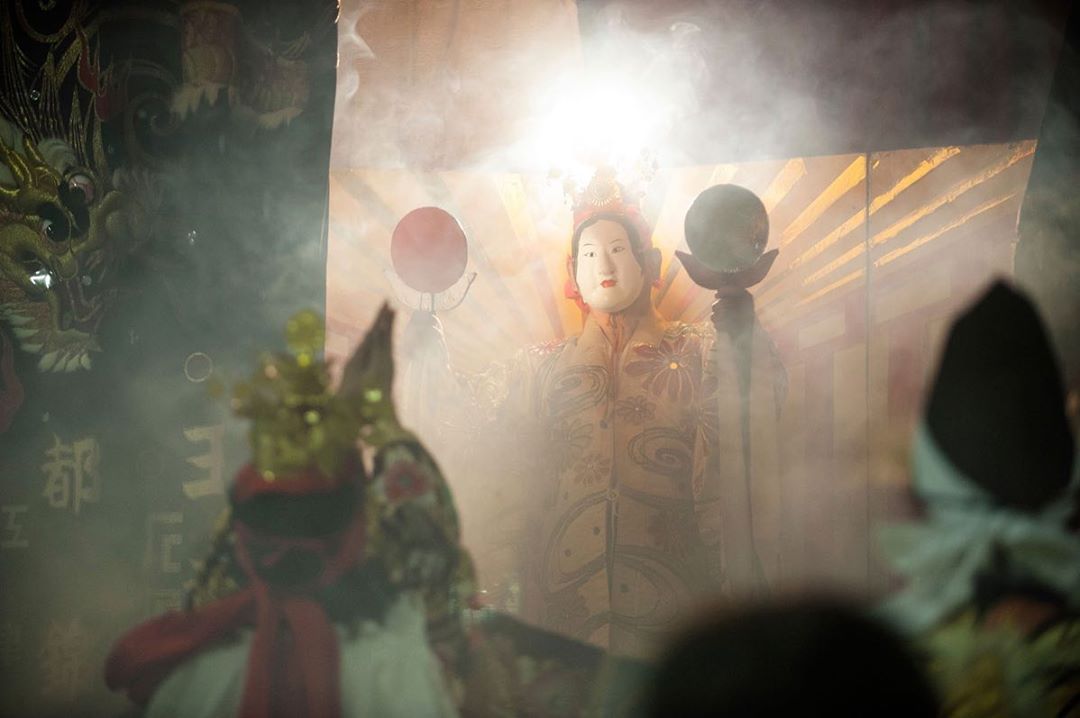
The mythical roots of kagura performances are recounted in Japan’s earliest extant chronicle, the eighth-century “Kojiki.” There the tale of Ame no Uzume — the goddess credited with introducing revelry to the world — performs an amusing dance to lure the reclusive sun goddess Amaterasu out of her cave and bring light and warmth to the world. In more terrestrial parts, many types of kagura have evolved, most incorporating scenes from Shinto mythology and other historical or fabled themes. Others are highly theatrical, coming close to kabuki. Known under the umbrella term “sato kagura” (“village kagura”), this latter style was officially encouraged during the Meiji Era (1868-1912) in an attempt, some kagura experts say, to suppress quasi-shamanistic versions that had spread throughout more remote parts, and which can still be seen today. Read the full story with the link in our bio. 📸: Rob Gilhooly
.
.
.
.
.
.
#Japan #Tokyo #Shimane #kagura #culture #japantravel #japantimes #travel #stage #日本 #東京 #島根 #神楽 #旅行 #文化 #演劇 #撮影 #👺

AloJapan.com